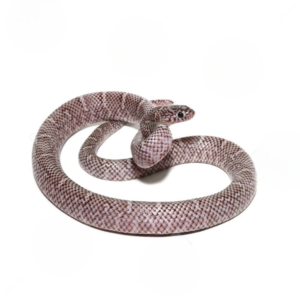Adult Aberrant California Kingsnake for sale.
The California kingsnake, scientifically known as Lampropeltis californiae, is a non-venomous species of snake found primarily in the western United States. These snakes are known for their beautiful and distinctive appearance, featuring shiny scales in a combination of black, white, and brown bands or speckles. They are relatively small, typically growing to between three and four feet in length, making them a popular choice for reptile enthusiasts and collectors.
One of the most fascinating aspects of the California kingsnake is its feeding habits. These snakes are constrictors, meaning they subdue their prey by wrapping around them and squeezing until they suffocate. They have a diverse diet that includes rodents, birds, lizards, and even other snakes. In captivity, they can be fed a diet of frozen-thawed rodents, making them relatively easy to care for as pets.
California kingsnakes are also highly adaptable to various environments, from grasslands and forests to desert and urban areas. They are known for their resilience and ability to thrive in a variety of conditions. Despite their non-venomous nature, they are excellent hunters and play a crucial role in controlling populations of rodents and other pests. Overall, the California kingsnake is a fascinating and versatile species that continues to captivate and intrigue reptile enthusiasts around the world.
WE HAVE AN ADULT ABERRANT CALIFORNIA KINGSNAKE FOR SALE. HERE ARE SOME HIGHLIGHTS:
- Lampropeltis getula californiae
- Captive Bred
- Male
- Approximately 30 – 40 Inches In Length
- Adults Can Reach Up To 4 – 5 Feet In Length
- Feeding On Live Or Frozen Adult Mice
FUN FACTS!
- These Are Active And Diurnal Making Them Fun To Watch In Their Enclosure
- Originating In The United States, Most Commonly Found In California And Neighboring States
- Kingsnakes Do Eat Other Snakes Including Other Kingsnakes And Are Not To Be Put Together In The Same Enclosure Unless For Breeding Purposes
- With Proper Care And Setup These Can Live Up To 15 – 20 Years In Captivity




